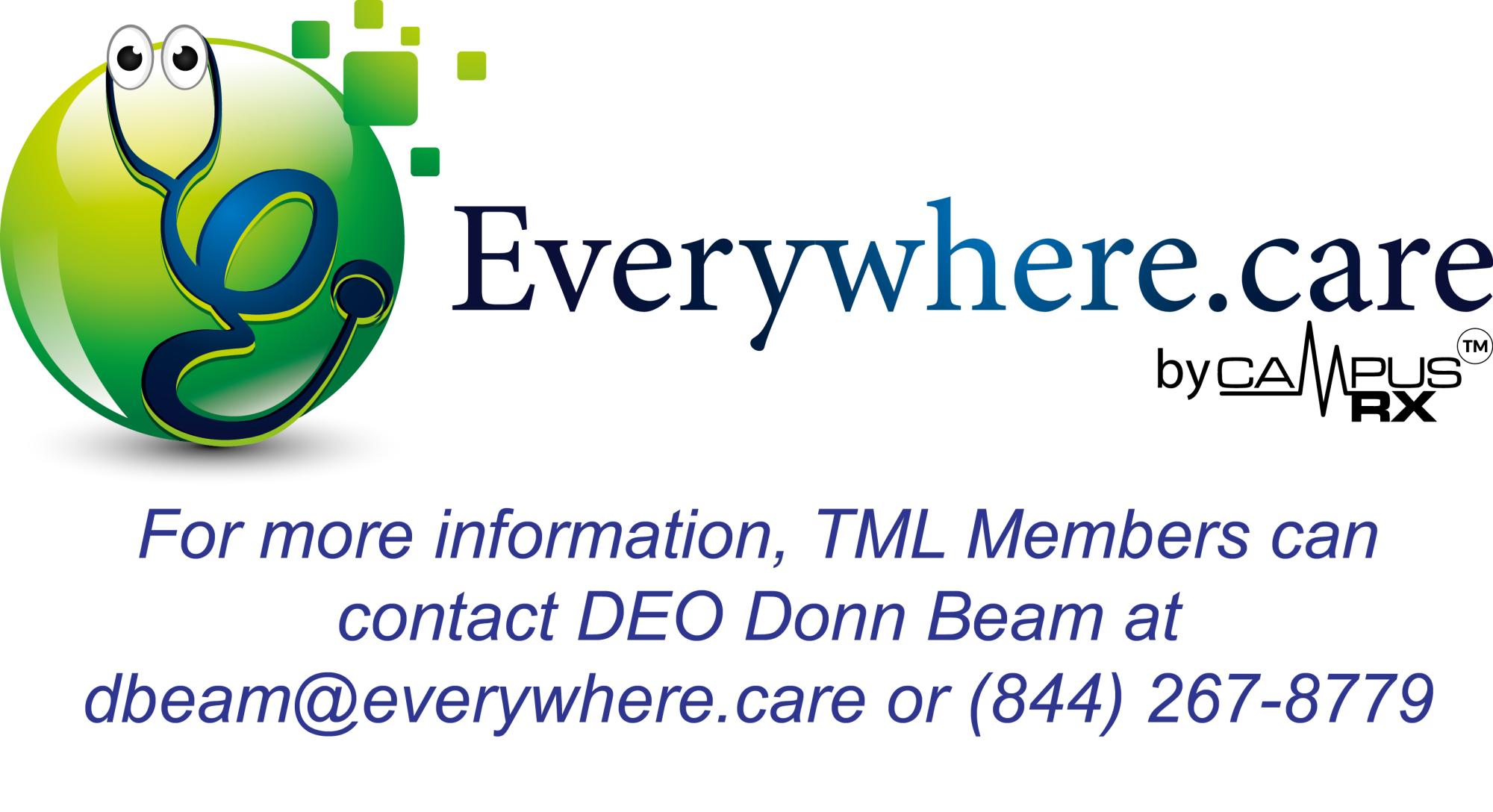Telehealth, preventative care can help reduce rising insurance premiums

By KATE COIL
TML Communications Specialist
Health insurance premiums are increasing across the U.S. and local governments will soon feel the impact.
According to a recent report by Peterson Center on Healthcare and the Kaiser Family Foundation, most insurers are requesting high single digit to low double-digit premium increases. Insurers cite general healthcare inflation and increased utilization as the major cost drivers.

The Local Government Employee Health Insurance pool, which more than one-quarter of all municipalities use for employee health insurance and is part of the State Employee Group Insurance program, has not been immune from these increases. Recently, the Local Government pool approved an aggregate 7.5% premium increase beginning Jan. 1, 2023.
Kevin Krushenski, TML’s municipal representative on the committee, said the increase is being felt across the board in healthcare, not just for governments.
“Over the last decade the program has worked hard to provide the most robust and competitive benefit at the lowest possible costs,” Krushenski said. “One of my priorities as a committee member has been to ensure moderate, stable premium increases, and, on average, program premiums have only increased by 3.5% annually without a double digit increase request. Unfortunately, the program operates in the same healthcare space as everyone else and that space is getting much more expensive.”
Not every local government will experience the same increase, and not every member of the Local Government pool will either. The Local Government pool is a combination of three tiers of communities and offers four different types of insurance: three PPO options and a consumer driven/health savings plan.
The pool also offers four different types of coverage: employee only, employee and children, employee and spouse, and family.
In order to ensure the premiums more closely match experience for each of these options, some premiums will increase more than 7.5% and some will increase less than 7.5%.
Kendra Gipson, director of vendor services and contracts for the Tennessee Finance and Administration’s Benefits Administration, said one of the reasons for this increase is that the Local Government pool saw more care usage during the pandemic than other groups.
“We administer four different groups: the Local Government Group, the Local Education, State, and Higher Ed,” she said. “The local government plan in the past few years has seen higher trends, meaning overall costs are higher. They have had some very high-cost claimants, which is continuing to drive that trend. There tend to be longer inpatient stays, which drive costs. We are continuing to see that. It was interesting that during the COVID time and mid-2020, we saw care in the Local Ed and State drop, but we didn’t see that in Local Government. Instead of dropping, it continued to increase.”
However, Gipson said increasing premiums are being seen across the board in both the private and public sectors as the result of general inflation.
“We are in a lot of business coalitions and have been talking to a lot of other employers,” she said. “That includes both governments and private employers, and we are really all facing issues and our issues are all very similar.”
Additionally, the Peterson-KFF report noted that many people deferred care during the pandemic and those people will likely begin seeking care again.
“The committees received a presentation from our consultant that health care deferred during COVID will cause a rebound in medical visits,” Krushenski said. “We’re hopeful for both our members and the plan that this deferral doesn’t lead to more costly services.”
Gipson said they have seen a half-a-percent increase in care in the past few years.
“In addition to this general medical trend that we deal with every year, we are having to deal with general inflation,’ Gipson said. “We are having to account for that in our projections. For example, we did build a little bit of inflation into our trend last year to account for what we are seeing.”
There are various ways the state program works to help consumers save money. The state’s plan has a self-funded structure where any money spent in the plan is collected in premiums, which helps keep administrative costs low.
“We do contract with third party administrations to manage a network and process claims, but as a self-funded employer the way that works is we are paying them a small administrative fee,” Gipson said. “We are actually pulling the money from premiums and paying the claims as they occur. There are a lot of administrative savings when you are self-funded. Because we are a large purchaser, we always use our purchasing power to get the best price. We write our own contracts, and one benefit we have over other employers is we have that purchasing power. IT gives us flexibility and protects our interests, our members and what they need. One strategy we have also used for quite a longtime now is narrow networks, which has been a big savings for us. We have introduced some broader network options that people can buy-up into.”
Preventative care and programs designed to help users take advantage of such care are one of the ways Gipson said money can be saved on health care costs in the long-term.
“A few years ago, we placed cardiac rehabilitation and physical therapy outside of a member’s deductible,” she said. “They had to meet their deductible to get those services, and that could be a deterrent for some people seeking those services. We also have on the pharmacy side for people taking medication for chronic conditions we have a maintenance tier where you can get a 90-day supply of medication for a lower cost. The goal for that is to encourage people to stay on their medication to manage those conditions and not end up in the hospital. We are trying to incentivize members to go get the kinds of care that help them stay healthy. Staying healthy, being well, getting quality care, and getting your preventative care can save money.”
 In order to reduce deferred care, telehealth use exploded during the pandemic. The State Group program’s vendors, BlueCross BlueShield and Cigna, experienced an increase from approximately 400 uses per month prior to COVID to nearly 10,000 uses per month every month since March 2020.
In order to reduce deferred care, telehealth use exploded during the pandemic. The State Group program’s vendors, BlueCross BlueShield and Cigna, experienced an increase from approximately 400 uses per month prior to COVID to nearly 10,000 uses per month every month since March 2020.
“The program learned that telehealth programs, like TML’s Everywhere.Care, proved to be a useful way to provide continuity of care at a relatively low cost,” Krushenski said.
TML Executive Director Anthony Haynes said the Everywhere.care partnership is a tool TML members can use to take charge of and enhance their own healthcare.
“TML entered into a partnership agreement with Everywhere.care as a benefit to our members,” Haynes said. “Everywhere.care provides unlimited use of their 24/7-365 telemedicine platform for common medical conditions and behavioral health. Whether you’re in Tennessee or any of the other 50 states you can speak with a licensed physician and have a prescription for your sick child in a matter of minutes. It’s an effective, low-cost health benefit to provide your employees or one they can enroll in themselves.”
Overall, staying in engaged and educated about healthcare options is vital for everyone.
“Stay engaged with your healthcare providers; don’t defer your basic care,” Krushenski said. “Things you put off today may become tougher to treat and more costly tomorrow.”
For more information about the state benefits and to stay up-to-date with the latest news and information about healthcare provided through the Local Government pool, visit https://www.tn.gov/partnersforhealth.html.
TML Members who want to learn more about Everywhere.care can visit everywhere.care or contact CEO Donn Beam at dbeam@everywhere.care or by calling (844)-267-8779 extension 700.

